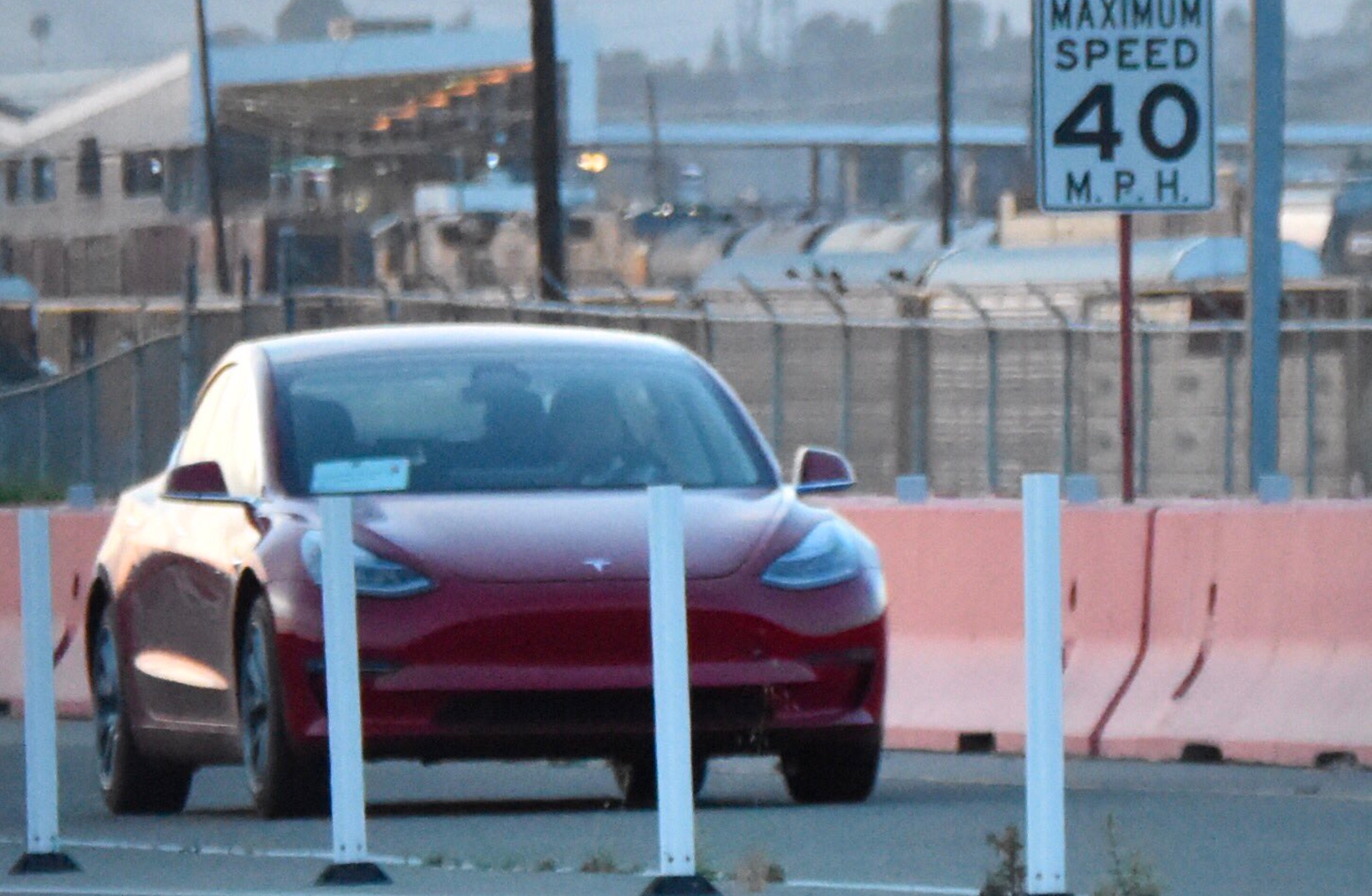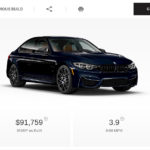

News
How Tesla Model 3 Performance stacks up against track legends in its class
This past weekend, Tesla CEO Elon Musk revealed the price and specifications of the Model 3 Performance with Dual-Motor AWD. According to Elon Musk, the Model 3 Performance will cost $78,000 with all options except Autopilot. The vehicle has a top speed of 155 mph, is capable of sprinting from 0-60 mph in 3.5 seconds, and is capable of traveling 310 miles on a single charge.
With Autopilot and Full Self-Driving added, the cost of the Model 3 Performance shoots up to $86,000, and with the possibility of an upcoming Ludicrous Mode upgrade ($7,500 for the Model S P85D and $10,000 for the Model S P90D), the price of the vehicle would likely be dangerously close, or even surpass the $90,000 barrier. While these prices are a far departure from the car’s $35,000 base price, they are, nevertheless, reasonable.
One thing to note when looking at the Model 3 Performance is Tesla’s target demographic. The vehicle is being marketed to car enthusiasts who are looking for a high-performance vehicle that is quick off the line and nimble on the corners. A clue regarding this could be found on Elon Musk’s own statements on Twitter.
Cost of all options, wheels, paint, etc is included (apart from Autopilot). Cost is $78k. About same as BMW M3, but 15% quicker & with better handling. Will beat anything in its class on the track.
— Elon Musk (@elonmusk) May 20, 2018
Musk’s specific mention of the Model 3 Performance’s capabilities on the track is particularly noteworthy. Tesla’s electric cars, such as the Model S P100D, after all, have largely been formidable in straight-line races, but not so much in extended track driving. As could be seen in instances of the Model 3 being driven on a track, however, this particular limitation does not seem to exist in Tesla’s newest vehicle.
Earlier this year, the Model 3 was taken to the Laguna Seca Raceway, where it completed nine laps without limiting its power. Last month, a Model 3 took on an Autocross course, where it performed equally well without any heating issues. Earlier this month, a Model 3 took on another course, showing off its acceleration and cornering in a quick lap. All these vehicles performed far better on the track than the Model S or Model X. None of them were specifically tuned for performance.
With the Model 3 Performance, Tesla is trying to breach into the track driving market. Musk’s tweet specifically mentioned the BMW M3 — a legend on the track — stating that the Model 3 Performance will be roughly 15% quicker. This places the Model 3 Performance in the same league as the Mercedes AMG C 63 S Coupe, Audi RS5, and of course, the BMW M3. Compared to the cost of the fully-loaded options for these vehicles, the compact electric car is actually more affordable.
Take the Mercedes AMG C 63 S Coupe, for example. A fully-loaded version of the car costs just slightly over $106,000. A fully-loaded BMW M3? $91,759. As for the Audi RS5, a fully-loaded version will set back owners $93,325. With this in mind, the Model 3 Performance’s $78,000 price is actually a pretty good steal.
Specs-wise, the Mercedes AMG C 63 S Coupe is equipped with a twin-turbocharged and intercooled DOHC 32-valve V8 engine. The vehicle has a top speed of 180 mph and is capable of sprinting from 0-60 mph in 3.8 secs. The BMW M3, on the other hand, is equipped with a twin-turbocharged and intercooled DOHC 24-valve inline-6 engine. This gives the BMW M3 a top speed of 163 mph and a 0-60 mph time of 4.0 seconds. As for the Audi RS5, the high-performance vehicle is fitted with a twin-turbocharged and intercooled DOHC 24-valve V6, which gives the car a top speed of 174 mph and a 0-60 mph time of 3.9 seconds.
When looking at the Model 3 Performance, it is pertinent to note that Tesla is not marketing the vehicle to the same demographic as the electric car’s $35,000 standard range version. The base Model 3 is designed to be an affordable electric car that is as stylish as it is capable. The Model 3 Performance is a vehicle designed to to be comparable to some of the best cars in its class. Apart from sharing the same frame and the same interior, the $35,000 base Model 3 and the $78,000 Model 3 Performance are two electric cars that could not be any more different.
Elon Musk
Tesla reveals it is using AI to make factories more sustainable: here’s how
Tesla is using AI in its Gigafactory Nevada factory to improve HVAC efficiency.

Tesla has revealed in its Extended Impact Report for 2024 that it is using Artificial Intelligence (AI) to enable its factories to be more sustainable. One example it used was its achievement of managing “the majority of the HVAC infrastructure at Gigafactory Nevada is now AI-controlled” last year.
In a commitment to becoming more efficient and making its production as eco-friendly as possible, Tesla has been working for years to find solutions to reduce energy consumption in its factories.
For example, in 2023, Tesla implemented optimization controls in the plastics and paint shops located at Gigafactory Texas, which increased the efficiency of natural gas consumption. Tesla plans to phase out natural gas use across its factories eventually, but for now, it prioritizes work to reduce emissions from that energy source specifically.
It also uses Hygrometric Control Logic for Air Handling Units at Giafactory Berlin, resulting in 17,000 MWh in energy savings each year. At Gigafactory Nevada, Tesla saves 9.5 GWh of energy through the use of N-Methylpyrrolidone refineries when extracting critical raw material.
Perhaps the most interesting way Tesla is conserving energy is through the use of AI at Gigafactory Nevada, as it describes its use of AI to reduce energy demand:
“In 2023, AI Control for HVAC was expanded from Nevada and Texas to now include our Berlin-Brandenburg and Fremont factories. AI Control policy enables HVAC systems within each factory to work together to process sensor data, model factory dynamics, and apply control actions that safely minimize the energy required to support production. In 2024, this system achieved two milestones: the majority of HVAC infrastructure at Gigafactory Nevada is now AI-controlled, reducing fan and thermal energy demand; and the AI algorithm was extended to manage entire chiller plants, creating a closed-loop control system that optimizes both chilled water consumption and the energy required for its generation, all while maintaining factory conditions.”
Tesla utilizes AI Control “primarily on systems that heat or cool critical factory production spaces and equipment.” AI Control communicates with the preexisting standard control logic of each system, and any issues can be resolved by quickly reverting back to standard control. There were none in 2024.
Tesla says that it is utilizing AI to drive impact at its factories, and it has proven to be a valuable tool in reducing energy consumption at one of its facilities.
Elon Musk
Tesla analysts believe Musk and Trump feud will pass
Tesla CEO Elon Musk and U.S. President Donald Trump’s feud shall pass, several bulls say.

Tesla analysts are breaking down the current feud between CEO Elon Musk and U.S. President Donald Trump, as the two continue to disagree on the “Big Beautiful Bill” and its impact on the country’s national debt.
Musk, who headed the Department of Government Efficiency (DOGE) under the Trump Administration, left his post in May. Soon thereafter, he and President Trump entered a very public and verbal disagreement, where things turned sour. They reconciled to an extent, and things seemed to be in the past.
However, the second disagreement between the two started on Monday, as Musk continued to push back on the “Big Beautiful Bill” that the Trump administration is attempting to sign into law. It would, by Musk’s estimation, increase spending and reverse the work DOGE did to trim the deficit.
Every member of Congress who campaigned on reducing government spending and then immediately voted for the biggest debt increase in history should hang their head in shame!
And they will lose their primary next year if it is the last thing I do on this Earth.
— Elon Musk (@elonmusk) June 30, 2025
President Trump has hinted that DOGE could be “the monster” that “eats Elon,” threatening to end the subsidies that SpaceX and Tesla receive. Musk has not been opposed to ending government subsidies for companies, including his own, as long as they are all abolished.
How Tesla could benefit from the ‘Big Beautiful Bill’ that axes EV subsidies
Despite this contentious back-and-forth between the two, analysts are sharing their opinions now, and a few of the more bullish Tesla observers are convinced that this feud will pass, Trump and Musk will resolve their differences as they have before, and things will return to normal.
ARK Invest’s Cathie Wood said this morning that the feud between Musk and Trump is another example of “this too shall pass:”
BREAKING: CATHIE WOOD SAYS — ELON AND TRUMP FEUD “WILL PASS” 👀 $TSLA
She remains bullish ! pic.twitter.com/w5rW2gfCkx
— TheSonOfWalkley (@TheSonOfWalkley) July 1, 2025
Additionally, Wedbush’s Dan Ives, in a note to investors this morning, said that the situation “will settle:”
“We believe this situation will settle and at the end of the day Musk needs Trump and Trump needs Musk given the AI Arms Race going on between the US and China. The jabs between Musk and Trump will continue as the Budget rolls through Congress but Tesla investors want Musk to focus on driving Tesla and stop this political angle…which has turned into a life of its own in a roller coaster ride since the November elections.”
Tesla shares are down about 5 percent at 3:10 p.m. on the East Coast.
Elon Musk
Tesla scrambles after Musk sidekick exit, CEO takes over sales
Tesla CEO Elon Musk is reportedly overseeing sales in North America and Europe, Bloomberg reports.

Tesla scrambled its executives around following the exit of CEO Elon Musk’s sidekick last week, Omead Afshar. Afshar was relieved of his duties as Head of Sales for both North America and Europe.
Bloomberg is reporting that Musk is now overseeing both regions for sales, according to sources familiar with the matter. Afshar left the company last week, likely due to slow sales in both markets, ending a seven-year term with the electric automaker.
Tesla’s Omead Afshar, known as Elon Musk’s right-hand man, leaves company: reports
Afshar was promoted to the role late last year as Musk was becoming more involved in the road to the White House with President Donald Trump.
Afshar, whose LinkedIn account stated he was working within the “Office of the CEO,” was known as Musk’s right-hand man for years.
Additionally, Tom Zhu, currently the Senior Vice President of Automotive at Tesla, will oversee sales in Asia, according to the report.
It is a scramble by Tesla to get the company’s proven executives over the pain points the automaker has found halfway through the year. Sales are looking to be close to the 1.8 million vehicles the company delivered in both of the past two years.
Tesla is pivoting to pay more attention to the struggling automotive sales that it has felt over the past six months. Although it is still performing well and is the best-selling EV maker by a long way, it is struggling to find growth despite redesigning its vehicles and launching new tech and improvements within them.
The company is also looking to focus more on its deployment of autonomous tech, especially as it recently launched its Robotaxi platform in Austin just over a week ago.
However, while this is the long-term catalyst for Tesla, sales still need some work, and it appears the company’s strategy is to put its biggest guns on its biggest problems.
-

 Elon Musk1 day ago
Elon Musk1 day agoTesla investors will be shocked by Jim Cramer’s latest assessment
-

 News6 days ago
News6 days agoTesla Robotaxi’s biggest challenge seems to be this one thing
-

 News2 weeks ago
News2 weeks agoTesla’s Grok integration will be more realistic with this cool feature
-

 Elon Musk2 weeks ago
Elon Musk2 weeks agoElon Musk slams Bloomberg’s shocking xAI cash burn claims
-

 News2 weeks ago
News2 weeks agoTesla China roars back with highest vehicle registrations this Q2 so far
-

 News2 weeks ago
News2 weeks agoTexas lawmakers urge Tesla to delay Austin robotaxi launch to September
-

 News2 weeks ago
News2 weeks agoTesla dominates Cars.com’s Made in America Index with clean sweep
-

 Elon Musk1 week ago
Elon Musk1 week agoFirst Look at Tesla’s Robotaxi App: features, design, and more


















